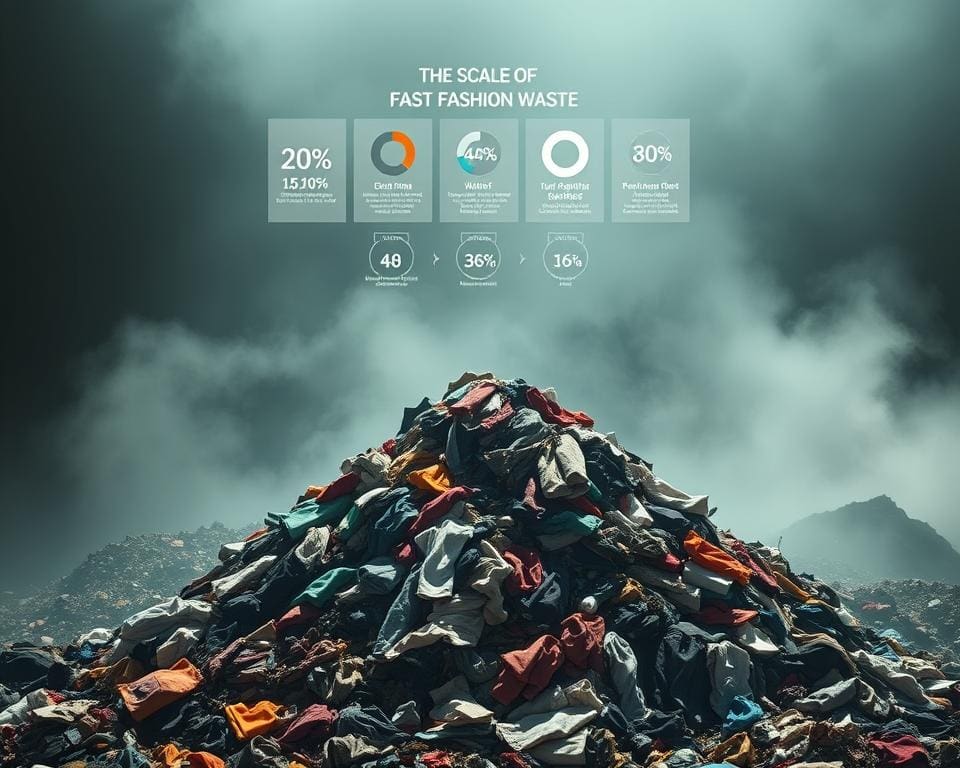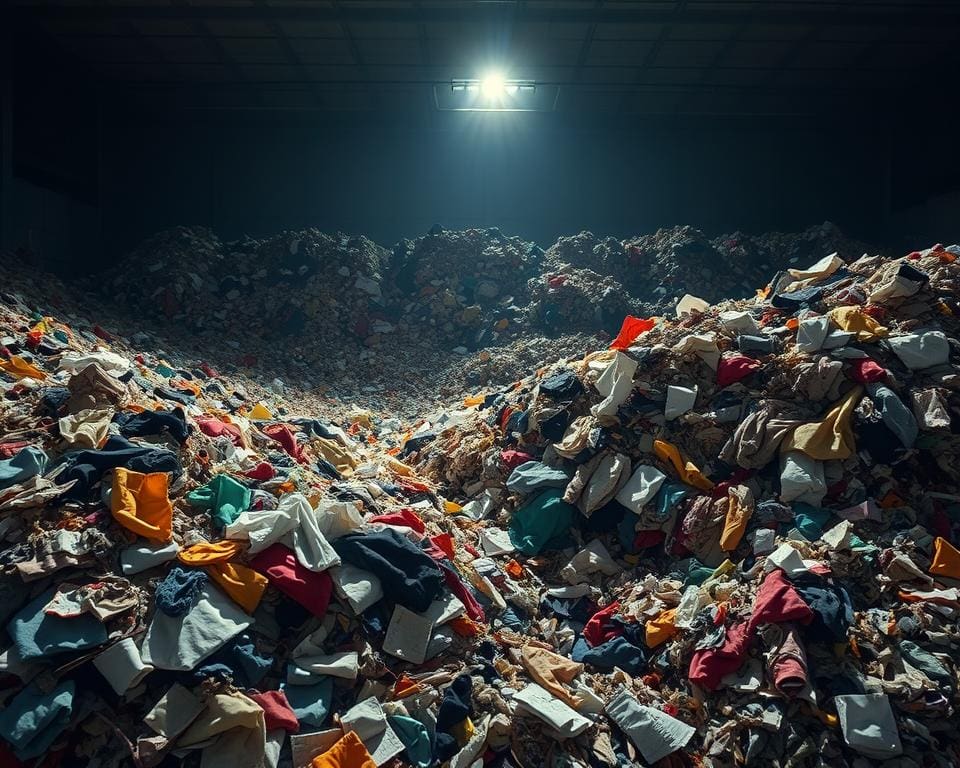The alarming growth of fast fashion has transformed the industry into a significant generator of waste, contributing millions of tonnes of discarded textiles each year. According to fast fashion waste statistics from the Ellen MacArthur Foundation, over 92 million tonnes of waste are produced annually, underscoring the urgent need to address the environmental impact of fast fashion waste. This staggering figure reflects a serious challenge that calls for increased awareness and sustainable practices within fashion. As we delve into the global fast fashion waste generation and its consequences, we hope to inspire a shift towards more conscious consumer choices.
The Scale of Fast Fashion Waste
The rise of fast fashion has resulted in a staggering amount of waste. Understanding the enormity of the problem begins with acknowledging the sheer volume of clothing discarded by consumers after minimal use. Cheap and trendy garments encourage a throwaway culture, leading to widespread environmental repercussions.
Understanding the enormity of the problem
Fast fashion waste facts reveal that millions of garments are abandoned each year, compounding the global fast fashion waste generation crisis. In the UK alone, around 300,000 tonnes of clothing end up in landfills annually. This alarming figure underscores the relentless cycle of consumption that characterises fast fashion. With garments designed for fleeting moments, the sustainability of fashion becomes a distant concern, overshadowed by the desire for the latest trends.
Fast fashion’s contribution to global waste
The environmental impact of fast fashion waste extends beyond landfills. The production of a single kilogram of cotton consumes approximately 10,000 litres of water, straining precious water resources in a world where scarcity marks many regions. Fast fashion brands, competing for market share, frequently produce clothing at unsustainable rates, culminating in immense waste generation. This pattern illustrates a system that emphasises volume over virtue, necessitating urgent discussions about the future of fashion and its environmental footprint.

How Much Waste Does Fast Fashion Produce
The fast fashion industry represents a significant challenge in terms of waste generation. Addressing this issue involves examining compelling statistics and exploring real-world examples of how major brands contribute to this growing problem. Understanding the impact of leading retailers can inspire necessary change and foster greater accountability within the fashion sector.
Statistics on fast fashion waste
Fast fashion waste statistics reveal a staggering dimension to this dilemma. Approximately 92 million tonnes of textile waste are produced globally each year, with a massive portion from fast fashion outlets. Studies show that about 85% of textiles ultimately find their way to landfills, showcasing the relentless cycle of consumption and disposal. The global fashion industry is responsible for roughly 10% of total carbon emissions, highlighting the environmental cost of cheap, rapidly produced clothing.
Case studies of major fast fashion brands
Examining case studies of major fast fashion brands brings these fast fashion waste facts to light. Zara, for instance, is known for its rapid production cycles, yielding around 450 million garments each year. H&M, another industry giant, faces scrutiny for its vast output and the resultant waste. Both brands illustrate the urgent need for sustainable practices, as the environmental impacts of their operations significantly contribute to global waste challenges.
Environmental Impact of Fast Fashion Waste
The environmental impact of fast fashion waste continues to escalate, presenting serious challenges for our planet. As consumers, it is crucial to understand the far-reaching consequences of our clothing choices, particularly regarding waste management.
Consequences for landfills and ecosystems
The overwhelming volume of fast fashion waste not only fills landfills but also poses significant threats to local ecosystems. Synthetic fabrics, prevalent in fast fashion, often do not decompose naturally. Items crafted from polyester and nylon can linger in the environment for up to 200 years, contributing to an alarming buildup of rubbish. This accumulation threatens wildlife and can disrupt local habitats, as various species ingest or become entangled in this waste.
Long-term pollution implications
The long-term pollution implications stemming from fast fashion waste are profound. As textiles sit in landfills, they break down, releasing harmful chemicals into the soil and groundwater. This leaching can contaminate water supplies, posing health risks to both humans and wildlife. Moreover, the decomposition process of these materials emits greenhouse gases, worsening climate change and contributing to global heating. Addressing these urgent environmental impacts requires a collective effort from consumers and brands alike to seek more sustainable alternatives.
Fast Fashion Waste Statistics You Should Know
The fast fashion industry significantly impacts global waste generation. Understanding key statistics reveals the enormity of this issue and highlights how consumption habits have changed over time. These fast fashion waste statistics serve as a stark reminder of the challenges we face.
Key numbers and figures
Recent reports indicate that the fashion industry generates approximately 92 million tonnes of clothing waste annually. This figure is poised to increase as the global fashion market is expected to grow by over 60% by 2030. Such a rise could lead to even more substantial waste production. The surge in consumer purchasing habits is alarming; for example, the average UK consumer is buying around 60% more clothing than a decade ago, amplifying the fast fashion waste statistics.
Trends in waste generation over the years
Over the years, the trends in waste generation have shown a clear trajectory towards increased waste. As the prevalence of fast fashion continues to dominate consumer behaviour, the implications for landfill use and environmental degradation become more pressing. The rapid production cycles result in clothing being disposed of at an unprecedented rate, contributing to an ongoing environmental crisis.
Reducing Fast Fashion Waste
As awareness grows around the environmental impact of the fashion industry, consumers are increasingly seeking ways to contribute to reducing fast fashion waste. Sustainable fashion waste management practices are more important than ever, encouraging individuals to make informed and conscious choices about their clothing consumption.
Effective strategies for consumers
Consumers can play a significant role in minimizing their impact by adopting a few practical strategies:
- Embrace second-hand shopping. Thrift stores and online marketplaces offer a treasure trove of unique pieces while diverting waste from landfills.
- Invest in quality over quantity. By selecting well-made garments, individuals can avoid frequent replacements, leading to a more sustainable wardrobe.
- Participate in clothing swaps. This encourages sharing and recycling among friends, fostering a community spirit while reducing the need for new purchases.
Brands leading the way in sustainability
Several brands are making strides in sustainable practices, setting an example for the industry. Stella McCartney is renowned for its commitment to eco-friendly materials and ethical production processes. Patagonia not only utilises recycled fabrics but also implements take-back schemes, encouraging customers to return worn items for recycling. These brands leading the way in sustainability highlight the potential for positive change within the fashion landscape.
Sustainable Fashion Waste Management Solutions
As the fashion industry grapples with the mounting issue of waste production, adopting sustainable fashion waste management solutions has become imperative. Initiatives like recycling and upcycling not only reduce waste but also reformulate the entire lifecycle of clothing. Many brands are beginning to integrate these practices, allowing consumers to see the value in garments beyond their initial wear. By promoting a shift towards circular economy models, brands can significantly diminish the impact of fast fashion waste disposal methods, enabling textile waste to be transformed back into usable raw materials.
Further innovation in recycling technologies can also play a pivotal role, allowing for the efficient conversion of discarded textiles into new fabrics. Companies that prioritise research and development in this area can lead the way in minimising pollution output from the fashion industry. As these solutions evolve, the potential for a cleaner industry becomes tangible, encouraging brands to embrace sustainable practices as part of their core values.
Consumer education is another essential component in the push for sustainable practices within the fashion landscape. By informing shoppers about the importance of responsible consumption and proper waste disposal, the industry can foster a culture of sustainability. Engaging customers in awareness campaigns empowers them to advocate for change, ensuring that sustainable fashion waste management solutions gain traction throughout the market. Together, informed consumers and forward-thinking brands can substantially reshape the future of fashion, steering it away from wastefulness and toward a more sustainable pathway.









